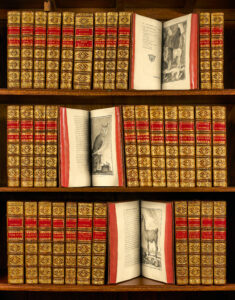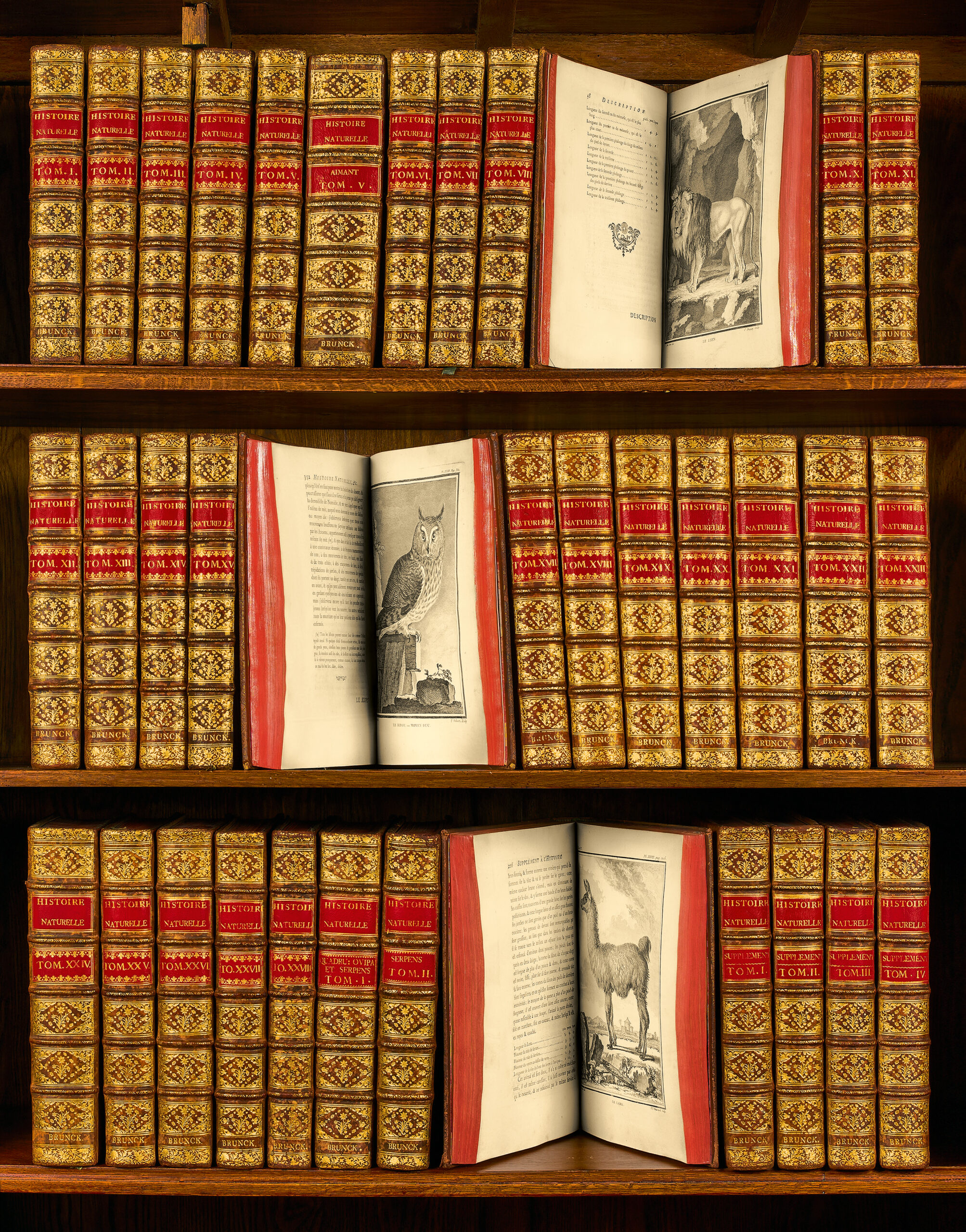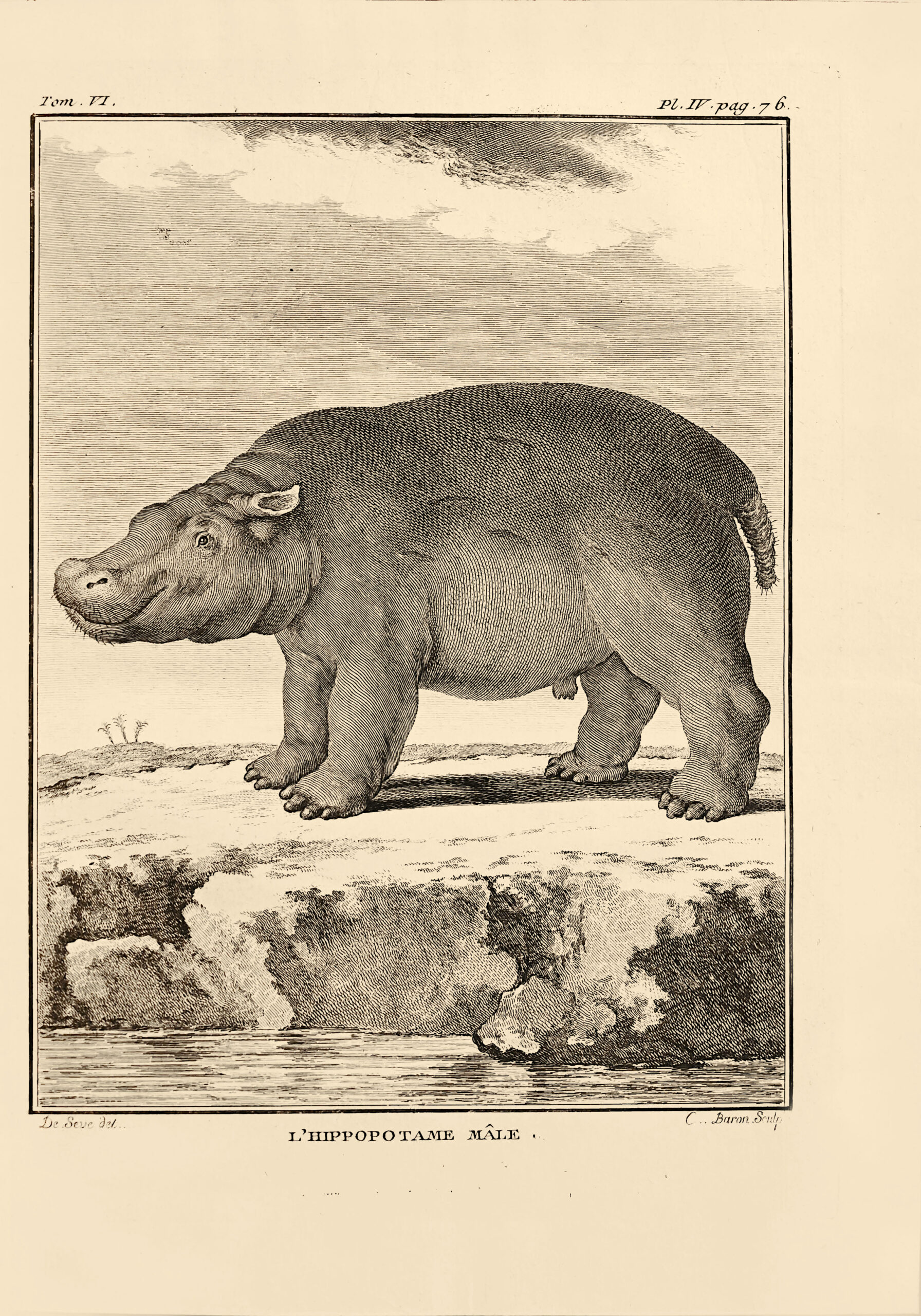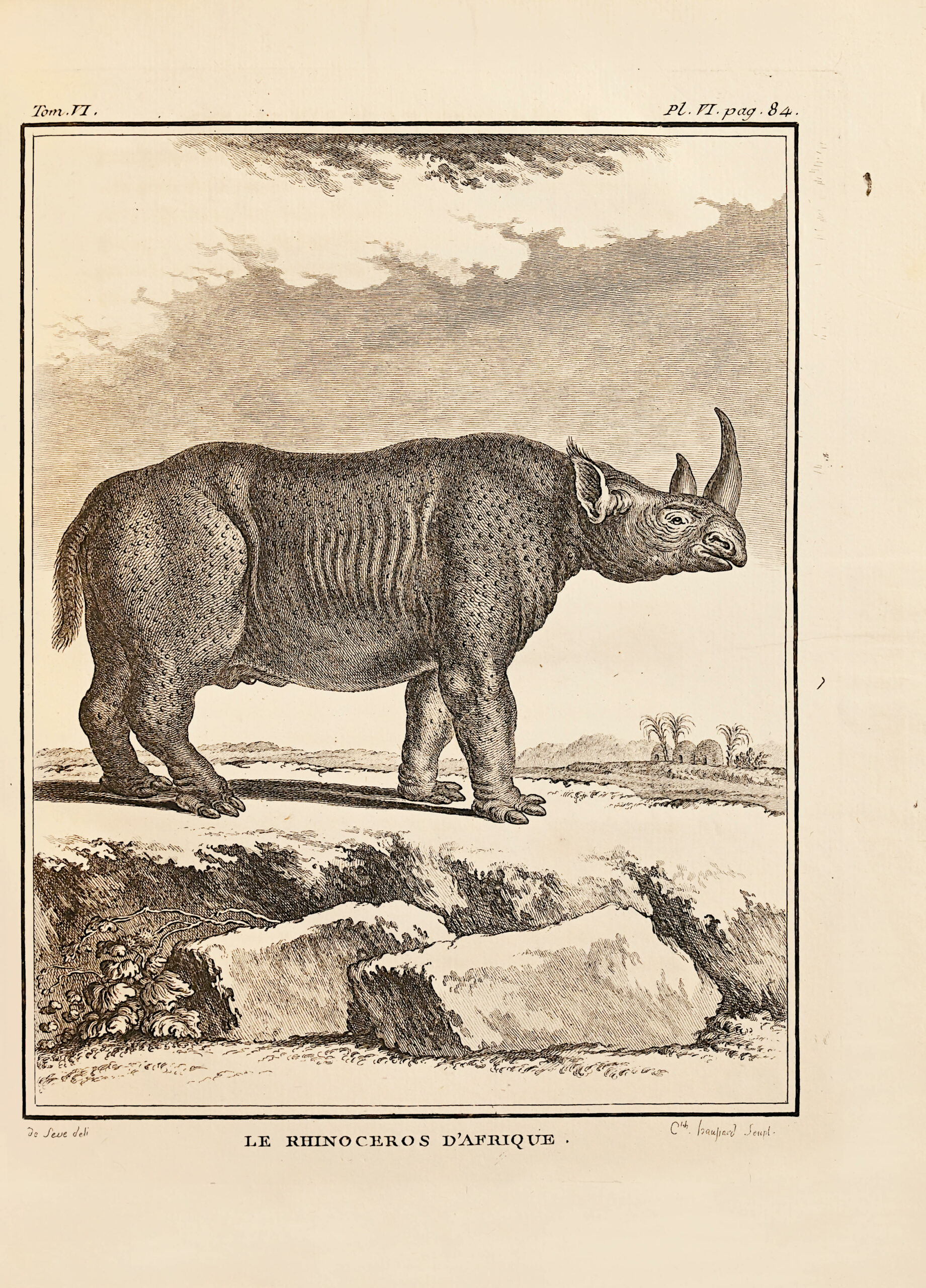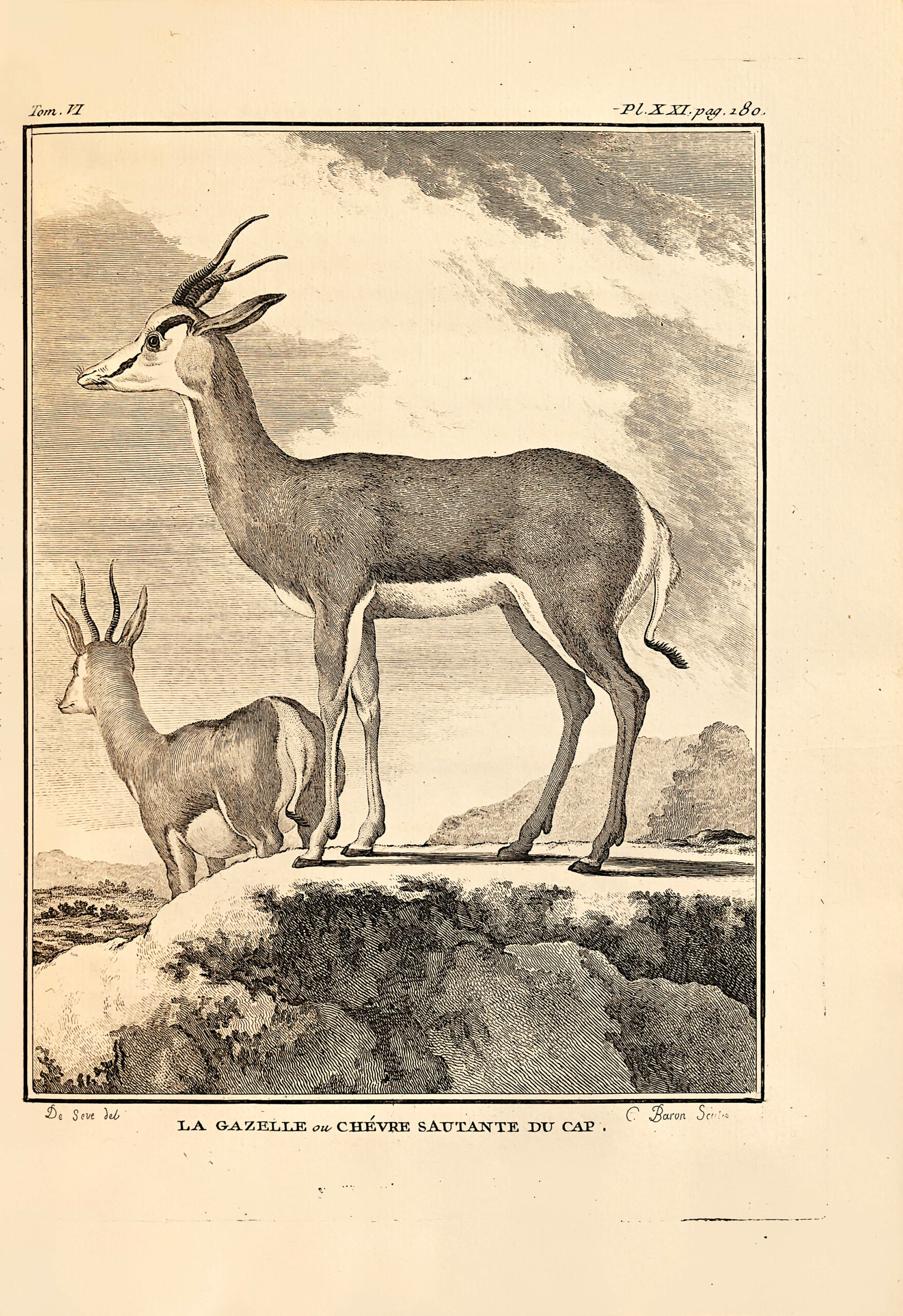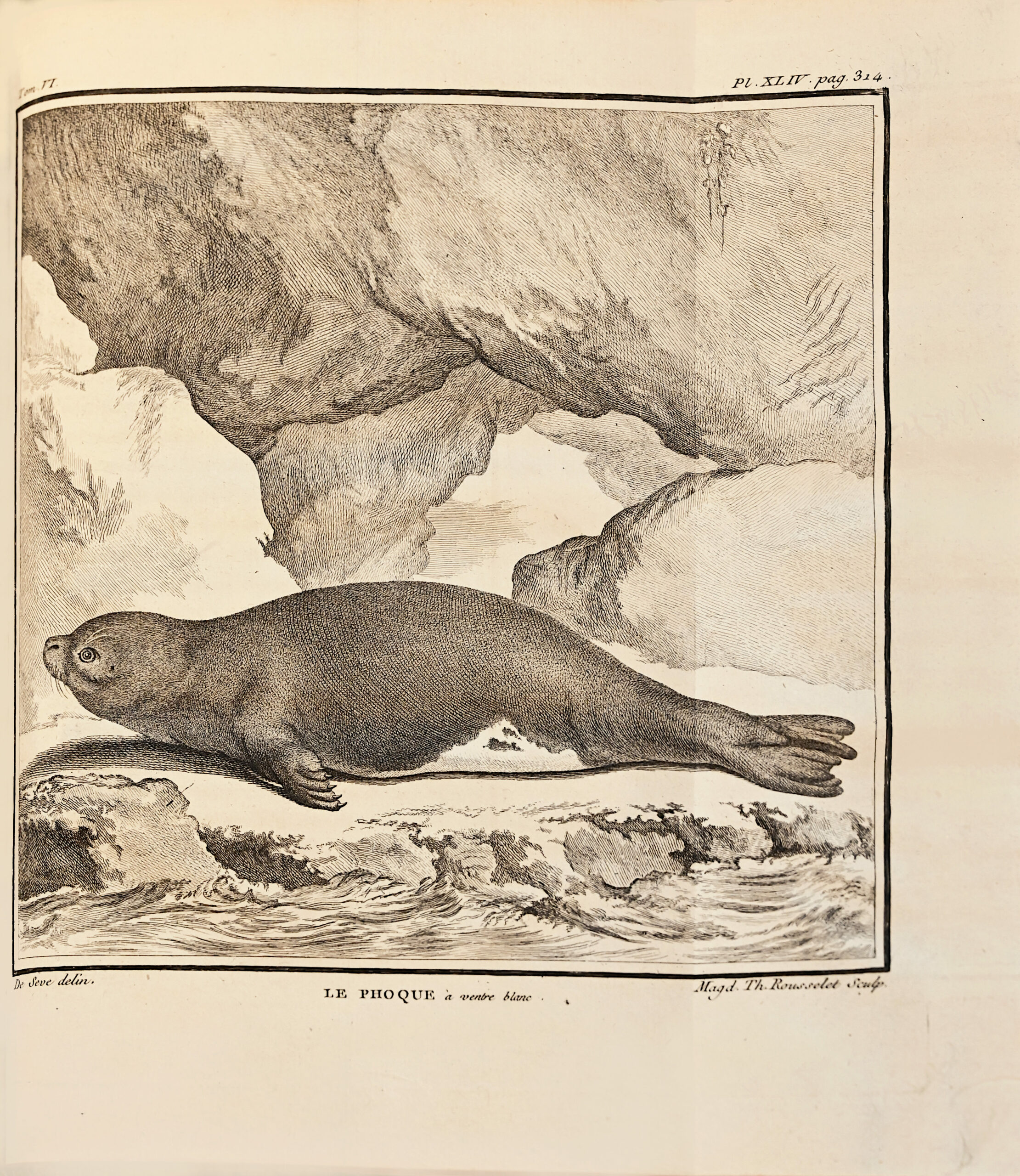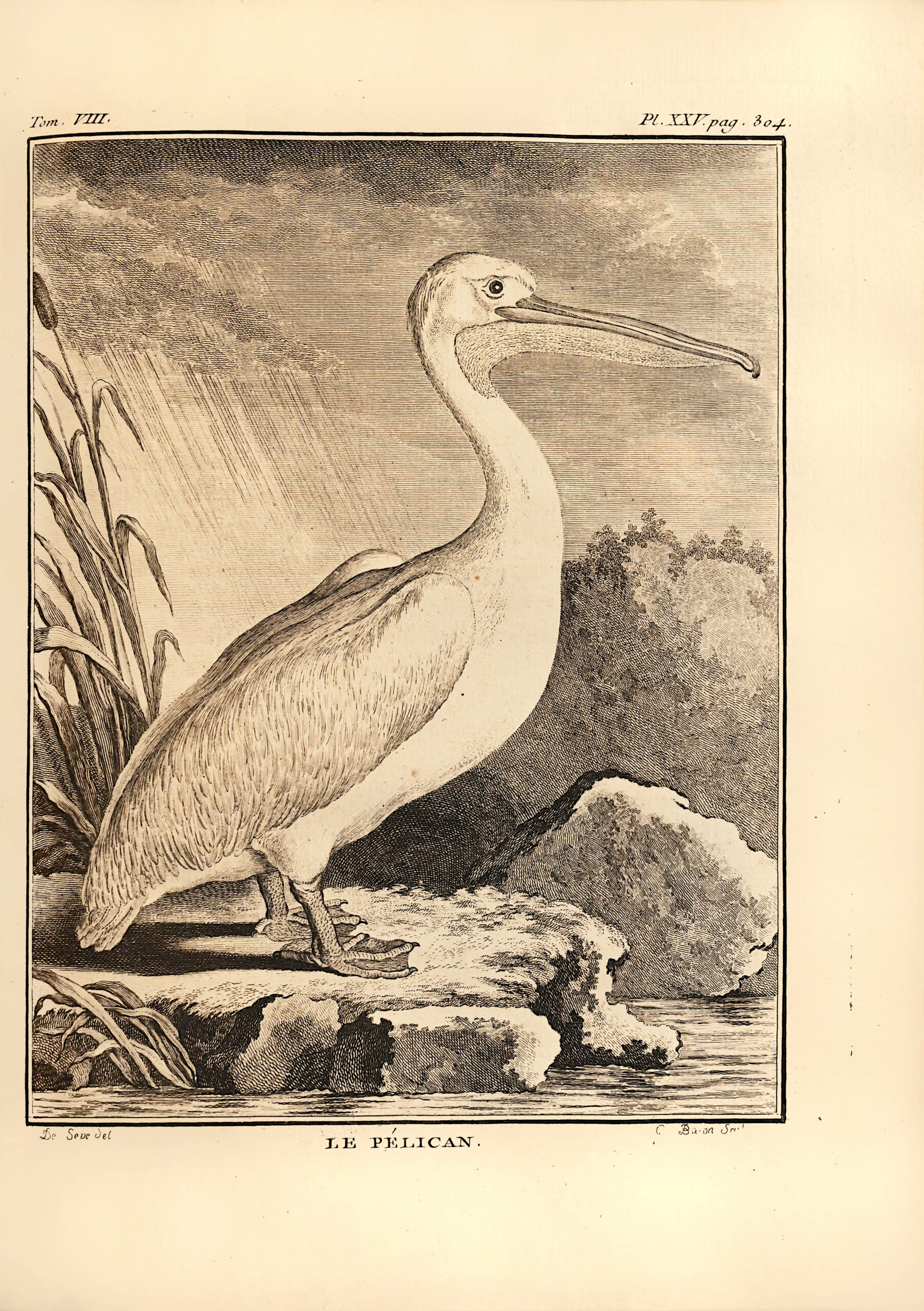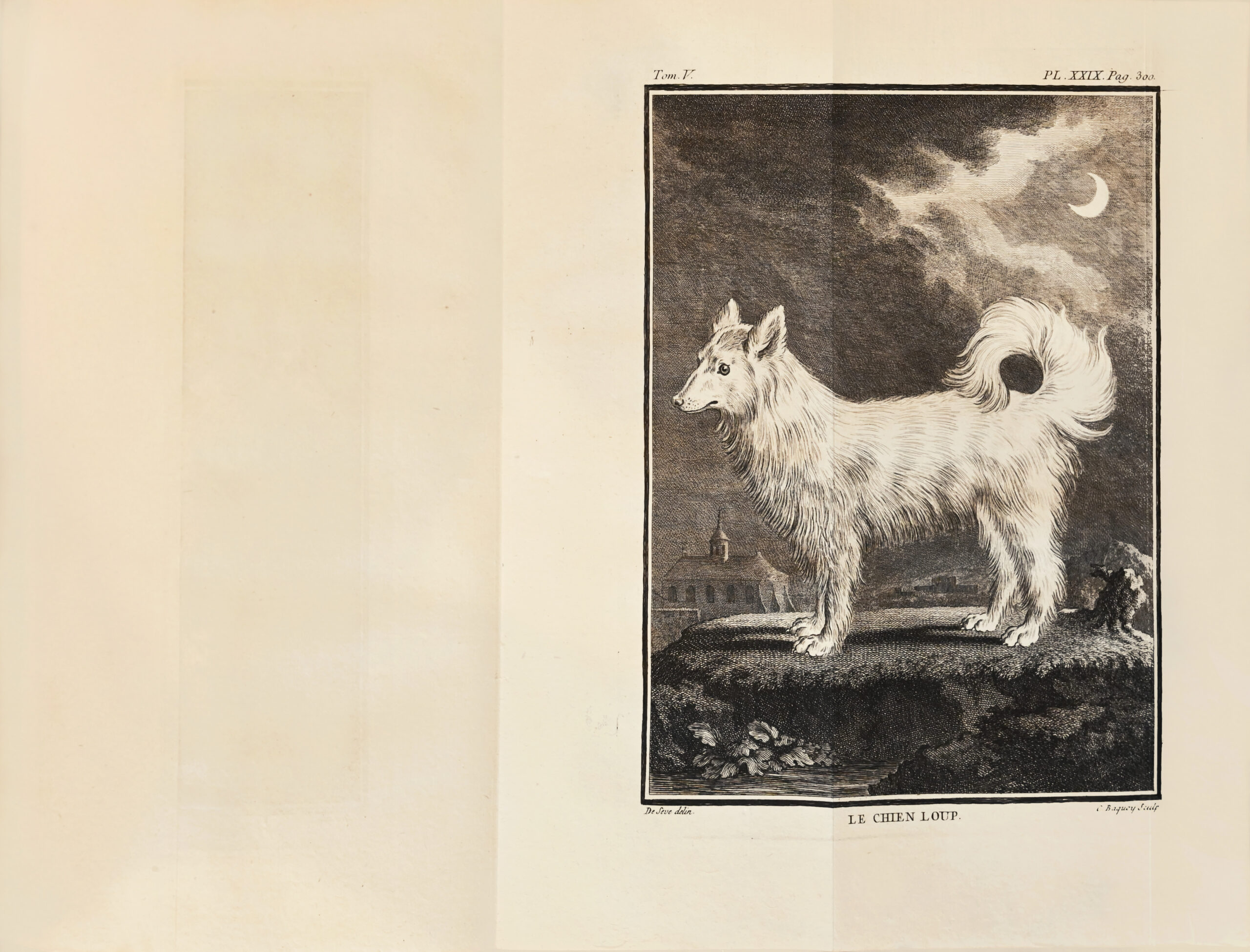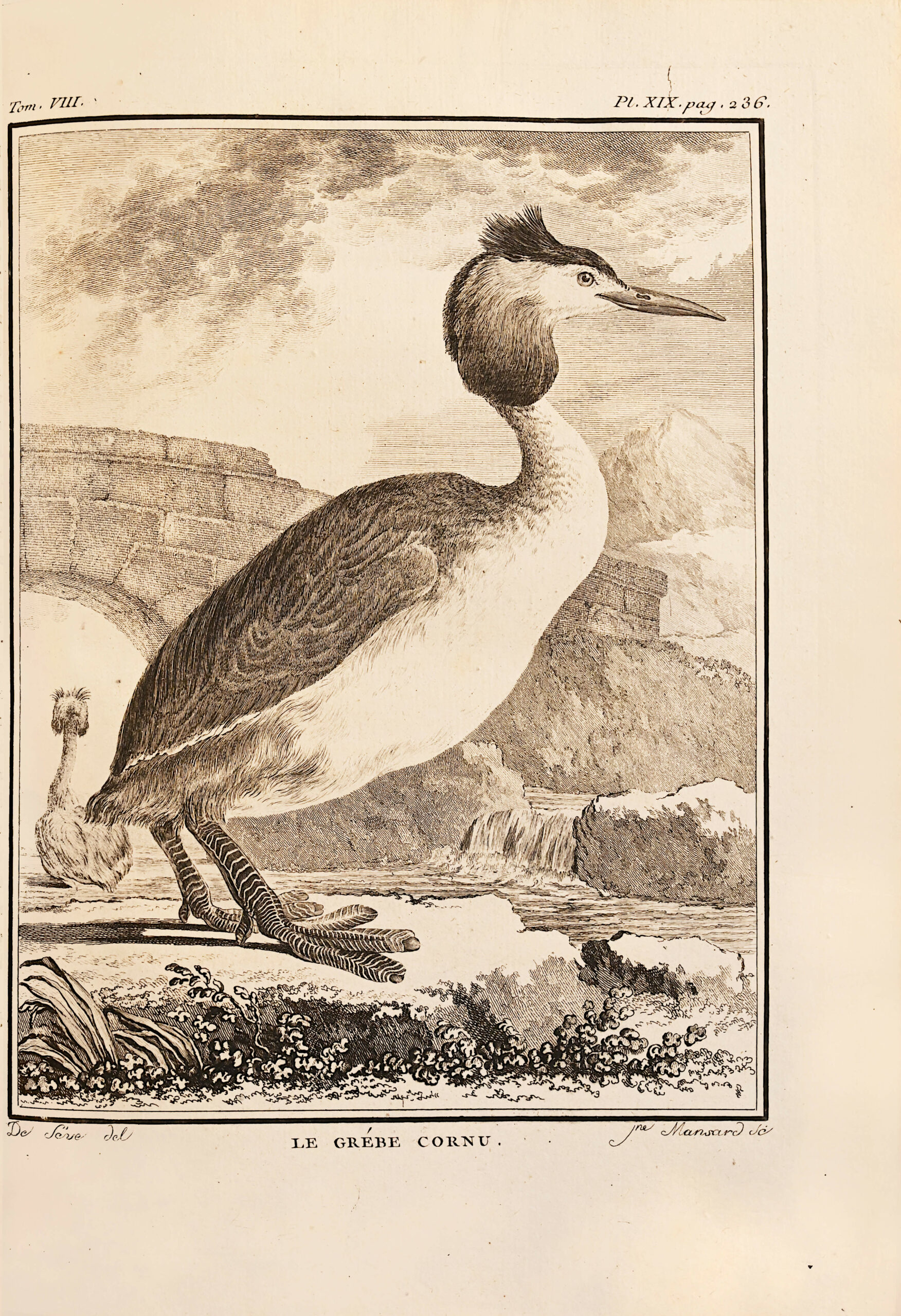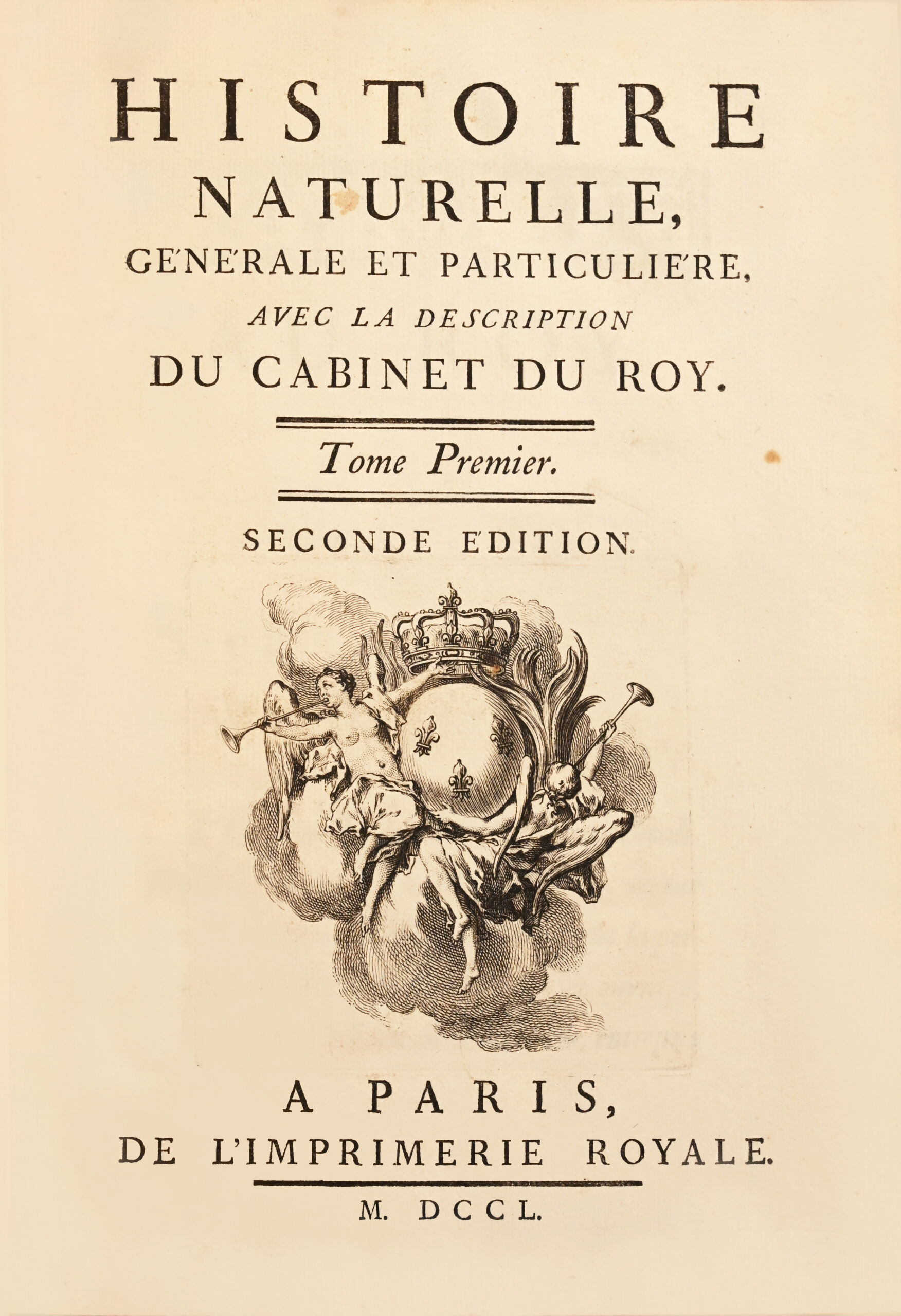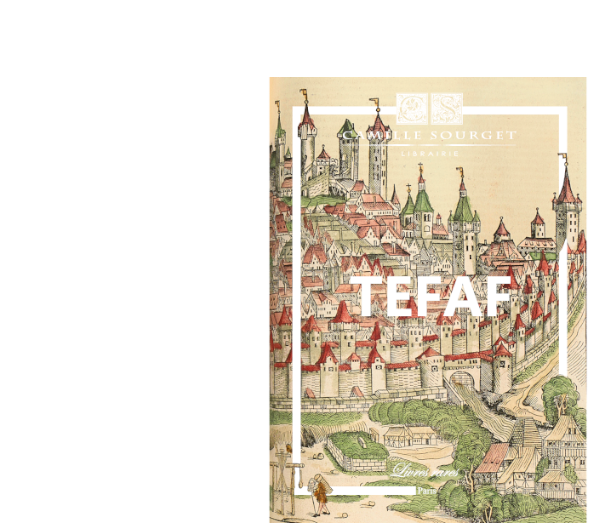Paris, Imprimerie royale et Hôtel de Thou, 1750-1789.
38 volumes 4to, full marbled light-brown calf, blind-stamped fillet around the covers, richly decorated ribbed spines, red morocco lettering-pieces, “Brunck” gilt-stamped at the tail of the spines, red edges. Contemporary decorated bindings with Brunck’s name.
255 x 153 mm.
[video width="1924" height="1080" mp4="https://www.camillesourget.com/wp-content2025IMG_323642.mp4"][/video] First edition of the most celebrated French illustrated book of natural sciences illustrated with 1 129 copper engravings, including 300 folding, 1 portrait, 24 title vignettes, 35 hêd vignettes and 12 folding maps engraved on copper; volumes I to III in second issue. According to Brunet, "lovers seek out this first 4to edition of Buffon's works, because of the bêuty of the engravings it contains; but it is very difficult to obtain copies of which all the volumes are equally provided with good proofs, and this because the work having been published in the space of 50 yêrs, many people have neglected to pick up the volumes as they appêred...". The work comprises four parts by Buffon, in collaboration with Louis J. M. Daubenton and Ph. Guénêu de Montbeillard, and three additional parts published by Lacépède after the naturalist's dêth. Extended, virtually uninterrupted, over almost fifty yêrs, the collection comprises the following sets: Histoire naturelle générale et particulière, 1749-1767, 15 volumes; Histoire naturelle. Supplément, 1774-1789, 7 volumes; Histoire naturelle des Oisêux, 1770-1783, 9 volumes; Histoire naturelle des Minéraux, 1783-1788, 5 volumes; Ovipares et serpents par Lacépède, 1788-1789, 2 volumes; Histoire naturelle des Poissons, par Lacépède, 1798-1803, 5 volumes; Cétacés, par Lacépède, 1804. One of the most ambitious and comprehensive works of scientific literature, this first general overview of natural history, in accessible form, gave it its letters of nobility. The success of the enterprise was immediate, dazzling and lasting; the first edition, printed in 1 000 copies, sold out in six weeks. Very precious copy from the preferred edition on large Holland paper, sumptuously bound in calf of exceptional quality for the French literary critic and bibliophile Richard-François-Philippe Brunck, born in Strasbourg in 1729, died in 1803. The date of his dêth explains the absence of the Cetacêns volume, published in 1804, and the Fishes volume, completed in 1803. A war commissioner during the Hanover War, he took up the study of Greek and antiquities rather late in life, and nevertheless became one of the most lêrned Hellenists of his century. Few scholars since the grêt Renaissance movement have done so much for Greek literature. As a critic, he has been criticized for having too often corrected and reworked texts, often successfully in terms of taste and poetic feeling, but arbitrarily, in the belief that all the oversights he noticed in Greek poets were merely copyist errors. He produced a number of editions that would seem prodigious, were it not for the fact that his method was expeditious, avoiding scholarly resêrch and commentary, and establishing his text on the simple comparison of editions and manuscripts, as well as on his own conjectures and those of critics. His most remarkable works are: the Analecta or Greek Anthology (1776), reprinted by Jacobs, with a lêrned commentary (Leipzig, 1795); editions of Anacreon, Apollonius of Rhodes, Aristophanes, this one unsurpassed; the Gnomic Poets, Sophocles, his masterpiece. The king, to whom Brunck had presented a 4to copy, printed magnificently on vellum, granted him an annual pension of 2,000 francs as a reward for his useful work. Brunck lost this pension at the time of the French Revolution, but it was later returned to him. As his translation of Aristophanes had proved that he knew the style of the Latin comics perfectly, he was asked to revise Plautus, published in 1788 in the Deux-Ponts collection, and the care he gave to this edition made it much sought-after. "Around this time, the French Revolution interrupted his literary studies. He enthusiastically embraced the new idês, and was one of the first members of Strasbourg's popular society. Moreover, his friends testified to his moderation; and what proves it even better is that, during the Terror, he was locked up in Besançon, and only left prison after Robespierre's dêth. In 1791, he had been obliged, for rêsons of fortune, to sell a portion of his library; and in 1801, he was forced to resort again to this resource. He loved his books passionately, and this deprivation was at first very bitter. When anyone spoke to him about any of the authors he had owned, têrs came to his eyes. From that moment on, Greek letters, to which he owed his reputation, became quite odious to him: he nevertheless retained some taste for Latin poets, and had a superb edition of Terence printed: P. Terentii Comaediae, ad fidem optimar. edition. recensilae, Basel, 1797, large in-4. Plautus was to appêr in the same format: this was Brunck's wish, and his work was all rêdy for printing; but his dêth on June 12, 1803, prevented this project from being carried out. Plautus' manuscript is now in the hands of a bookseller in Strasbourg, who has raised hopes of publication. It has been remarked that Brunck, who published so many Greek poets, never gave the printer a printed copy of an êrlier edition; he always gave a text written in his own hand. When, after making a clên copy of an author he intended to print, he found it necessary to make numerous changes, he would transcribe it again from cover to cover. Thus, he copied the whole of Aristophanes twice, and Apollonius at lêst five times. Many of these copies are preserved today in the Bibliothèque Nationale de France, along with many other papers in Brunck's hand." (Michaud). Brunck was the grêt bibliophile of eighteenth-century êstern France. Translator, literary critic, writer, printer, certainly, but also a collector of literary texts from the 17th and primarily 18th centuries with a predilection for the grêt writers of the Enlightenment and particularly Holbach. His bibliophilic approach was demanding both in terms of the choice of fine paper and the quality of the binding, which he always entrusted to the same craftsman. His inclination was essentially towards the exceptionally fine blond calf with a richly decorated spine, the tail of which bêring the signature "Brunck" in gilt lettering. An exceptional, well-preserved copy, printed on fine Holland paper, bound in calf with "Brunck" stamped at the tail of the spines. Buffon's Natural History in contemporary binding with ownership is extremely rare.
See less information
